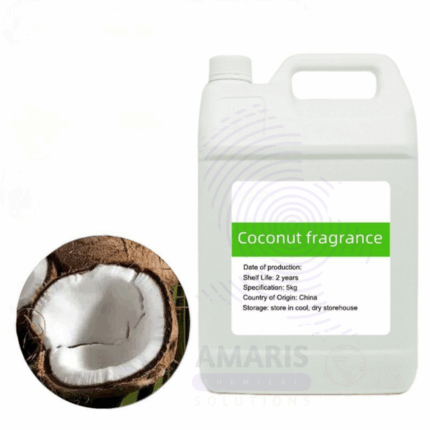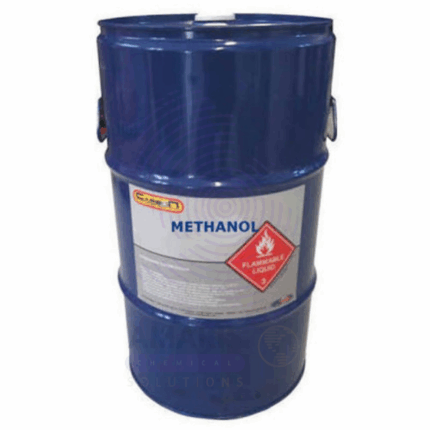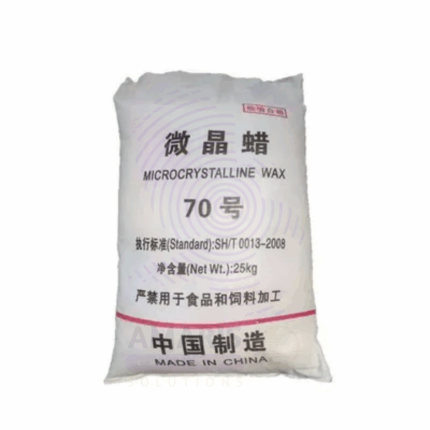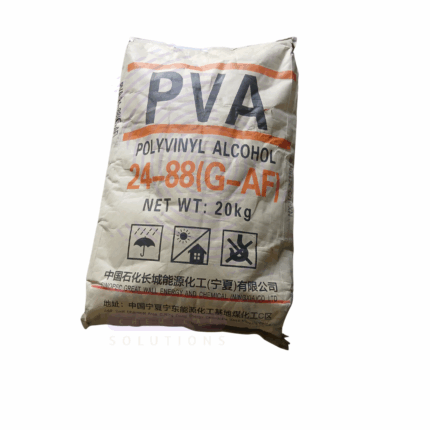
Sulphadoxine BP 98
Sulphadoxine BP 98 is a long-acting synthetic sulfonamide antibiotic used primarily in combination therapies for treating malaria and certain bacterial infections. Its prolonged half-life makes it suitable for single-dose treatments and prophylaxis. The British Pharmacopoeia (BP) 98% grade ensures pharmaceutical-grade purity, making it suitable for incorporation into human and veterinary medicinal formulations.
Primary Uses
Human Medicine
Antimalarial Agent: Primarily used in combination with pyrimethamine (as Fansidar) for treatment and prophylaxis of malaria, especially Plasmodium falciparum infections.
Antibacterial Agent: Occasionally used to treat bacterial infections susceptible to sulfonamides, particularly in tropical regions.
Veterinary Medicine
Antimicrobial Agent: Used in combination therapies for prevention and treatment of protozoal and bacterial infections in livestock.
Secondary Uses
Research & Development
Pharmaceutical Studies: Used in pharmacokinetic and formulation research for antimalarial and sulfonamide drugs.
Drug Resistance Monitoring: Utilized in studies monitoring drug resistance patterns in malaria parasites.
Public Health Programs
Mass Drug Administration: Employed in malaria-endemic regions as part of public health interventions.
Basic Identification Attributes
Chemical Name (IUPAC): 4-Amino-N-(5,6-dimethoxy-4-pyrimidinyl)benzenesulfonamide
Common/Trade Name: Sulphadoxine BP 98
CAS Number: 2447-57-6
HS Code: 2941.20.00
Synonyms: Sulfadoxine, Sulphadoxine
Physical & Chemical Properties
Physical State: White crystalline powder
Color & Odor: White; odorless to faint sulfur-like odor
Melting Point: 190–194 °C
Solubility: Slightly soluble in water; soluble in alkaline solutions and organic solvents
Density: Approx. 1.5 g/cm³
Safety & Hazard Attributes
GHS Classification: May cause allergic skin reactions and serious hypersensitivity reactions
Toxicity: Moderate toxicity; risk of severe adverse reactions like Stevens-Johnson syndrome
Exposure Limits: No specific occupational limits; handle with care
Storage & Handling Attributes
Storage Conditions: Store in a cool, dry, well-ventilated area, away from light and moisture
Container Type: Sealed HDPE or glass containers
Shelf Life: 24 months under recommended storage conditions
Handling Precautions: Avoid dust generation; use PPE such as gloves and masks
Regulatory & Compliance Attributes
Complies with British Pharmacopoeia (BP) standards
Manufactured under Good Manufacturing Practices (GMP)
Approved for use in antimalarial combination therapies by relevant regulatory authorities
Environmental & Health Impact
Biodegradability: Limited biodegradability under aerobic conditions
Ecotoxicity: Potentially toxic to aquatic organisms; avoid environmental release
Bioaccumulation: Not significant
PPE Required: Gloves, protective clothing, and dust masks recommended
Handling Guidelines: Use in well-ventilated areas; avoid inhalation and skin contact
Storage Measures: Keep containers tightly closed and dry
First Aid Measures
Inhalation: Remove to fresh air; seek medical attention if respiratory symptoms develop
Skin Contact: Wash thoroughly with soap and water; discontinue use if irritation occurs
Eye Contact: Rinse eyes with water for at least 15 minutes; seek medical help if irritation persists
Ingestion: Rinse mouth and seek medical advice promptly
Firefighting Measures
Fire Hazards: Combustible solid
Extinguishing Media: Use water spray, foam, dry chemical, or CO₂ extinguishers
Hazardous Combustion Products: Carbon oxides, nitrogen oxides, sulfur oxides
Related products
Methanol
Methyl Salicylate BP
Miconazole Nitrate BP
Miconazole Nitrate BP is a high-purity, pharmaceutical-grade antifungal agent conforming to British Pharmacopoeia (BP) specifications. It is widely used in the formulation of topical and oral pharmaceutical products for the treatment of fungal infections caused by dermatophytes and yeasts, including Candida species. Miconazole Nitrate functions by inhibiting the biosynthesis of ergosterol, a vital component of fungal cell membranes, leading to cell death.
This white to off-white crystalline powder is highly effective and exhibits broad-spectrum antifungal and some antibacterial activity. It is commonly utilized in creams, ointments, powders, and gel formulations.


 Preservatives(food)
Preservatives(food) Flavor Enhancers
Flavor Enhancers Acidulants
Acidulants Sweeteners
Sweeteners Antioxidants
Antioxidants Colorants(food)
Colorants(food) Nutraceutical Ingredients (food)
Nutraceutical Ingredients (food) Nutrient Supplements
Nutrient Supplements Emulsifiers
Emulsifiers
 Collectors
Collectors Dust Suppressants
Dust Suppressants Explosives and Blasting Agents
Explosives and Blasting Agents Flocculants and Coagulants
Flocculants and Coagulants Frothers
Frothers Leaching Agents
Leaching Agents pH Modifiers
pH Modifiers Precious Metal Extraction Agents
Precious Metal Extraction Agents
 Antioxidants(plastic)
Antioxidants(plastic) Colorants (Pigments, Dyes)
Colorants (Pigments, Dyes) Fillers and Reinforcements
Fillers and Reinforcements Flame Retardants
Flame Retardants Monomers
Monomers Plasticizers
Plasticizers Polymerization Initiators
Polymerization Initiators Stabilizers (UV, Heat)
Stabilizers (UV, Heat)
 Antifoaming Agents
Antifoaming Agents Chelating Agents
Chelating Agents Coagulants and Flocculants
Coagulants and Flocculants Corrosion Inhibitors
Corrosion Inhibitors Disinfectants and Biocides
Disinfectants and Biocides Oxidizing Agents
Oxidizing Agents pH Adjusters
pH Adjusters Scale Inhibitors( water)
Scale Inhibitors( water)
 Antioxidants(cosmetic)
Antioxidants(cosmetic) Emollients
Emollients Fragrances and Essential Oils
Fragrances and Essential Oils Humectants
Humectants Preservatives
Preservatives Surfactants(cosmetic)
Surfactants(cosmetic) Thickeners
Thickeners UV Filters
UV Filters
 Fertilizers
Fertilizers Soil Conditioners
Soil Conditioners Plant Growth Regulators
Plant Growth Regulators Animal Feed Additives
Animal Feed Additives Biostimulants
Biostimulants Pesticides (Herbicides, Insecticides, Fungicides)
Pesticides (Herbicides, Insecticides, Fungicides)
 Active Pharmaceutical Ingredients (APIs)
Active Pharmaceutical Ingredients (APIs) Excipients
Excipients Solvents(pharmaceutical)
Solvents(pharmaceutical) Antibiotics
Antibiotics Antiseptics and Disinfectants
Antiseptics and Disinfectants Vaccine Adjuvants
Vaccine Adjuvants Nutraceutical Ingredients (pharmaceutical)
Nutraceutical Ingredients (pharmaceutical) Analgesics & Antipyretics
Analgesics & Antipyretics
 Analytical Reagents
Analytical Reagents Solvents(lab)
Solvents(lab) Chromatography Chemicals
Chromatography Chemicals Spectroscopy Reagents
Spectroscopy Reagents microbiology-and-cell-culture-reagents
microbiology-and-cell-culture-reagents Molecular Biology Reagents
Molecular Biology Reagents Biochemical Reagents
Biochemical Reagents Inorganic and Organic Standards
Inorganic and Organic Standards Laboratory Safety Chemicals
Laboratory Safety Chemicals Specialty Laboratory Chemicals(Special Laboratory Equipment)
Specialty Laboratory Chemicals(Special Laboratory Equipment)
 Demulsifiers
Demulsifiers Hydraulic Fracturing Fluids
Hydraulic Fracturing Fluids Scale Inhibitors(oil)
Scale Inhibitors(oil) Surfactants(oil)
Surfactants(oil) Drilling Fluids
Drilling Fluids
 Dyes and Pigments
Dyes and Pigments Bleaching Agents
Bleaching Agents Softening Agents
Softening Agents Finishing Agents
Finishing Agents Antistatic Agents
Antistatic Agents
 Admixtures
Admixtures Waterproofing Agents
Waterproofing Agents Sealants and Adhesives
Sealants and Adhesives Curing Compounds
Curing Compounds Concrete Repair Chemicals
Concrete Repair Chemicals Anti-Corrosion Coatings
Anti-Corrosion Coatings
 Surfactants(cleaning)
Surfactants(cleaning) Builders
Builders Enzymes
Enzymes Solvents (Cleaning)
Solvents (Cleaning) Fragrances
Fragrances
 Electronic Chemicals
Electronic Chemicals Catalysts
Catalysts Lubricants
Lubricants Photographic Chemicals
Photographic Chemicals Refrigerants
Refrigerants Automotive chemicals
Automotive chemicals Pyrotechnic Chemicals
Pyrotechnic Chemicals
 Biodegradable Surfactants
Biodegradable Surfactants Bio-based Solvents
Bio-based Solvents Renewable Polymers
Renewable Polymers Carbon Capture Chemicals
Carbon Capture Chemicals Wastewater Treatment Chemicals
Wastewater Treatment Chemicals
 Pigments
Pigments Solvents(paint)
Solvents(paint) Specialty Coatings
Specialty Coatings Binders/Resins
Binders/Resins Additives
Additives Driers
Driers Anti-Corrosion Agents
Anti-Corrosion Agents Functional Coatings
Functional Coatings Application-Specific Coatings
Application-Specific Coatings
 Fresh Herbs
Fresh Herbs Ground Spices
Ground Spices Whole Spices
Whole Spices Spice Blends
Spice Blends Dried Herbs
Dried Herbs
 Leavening Agents
Leavening Agents Dough Conditioners
Dough Conditioners Flour Treatments
Flour Treatments Fat Replacers
Fat Replacers Decoratives
Decoratives Preservatives(baking)
Preservatives(baking)
 Plasticizers & Softeners
Plasticizers & Softeners Reinforcing Agents
Reinforcing Agents Adhesion Promoters
Adhesion Promoters Vulcanizing Agents
Vulcanizing Agents Antidegradants
Antidegradants Blowing Agents
Blowing Agents Fillers & Extenders
Fillers & Extenders Accelerators & Retarders
Accelerators & Retarders























